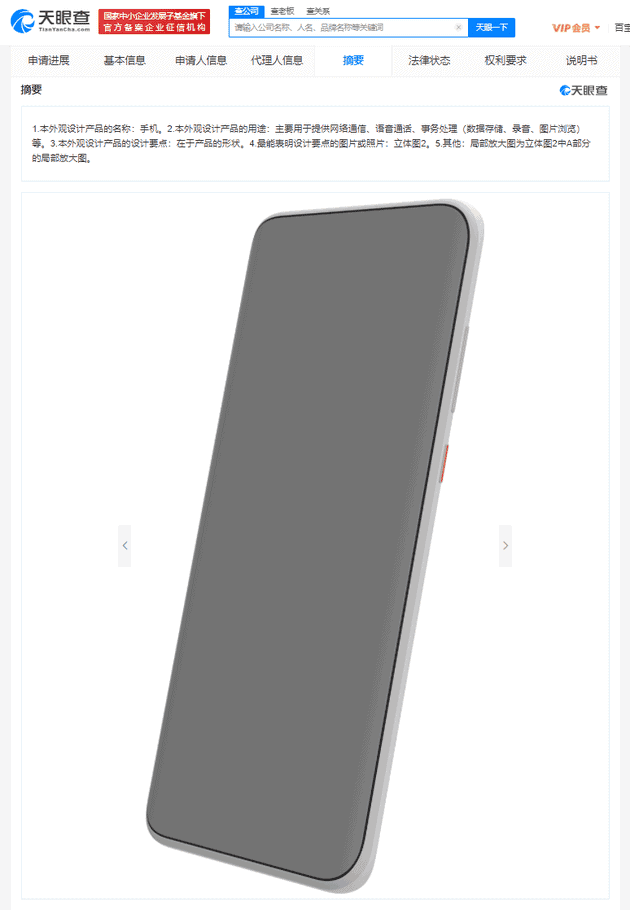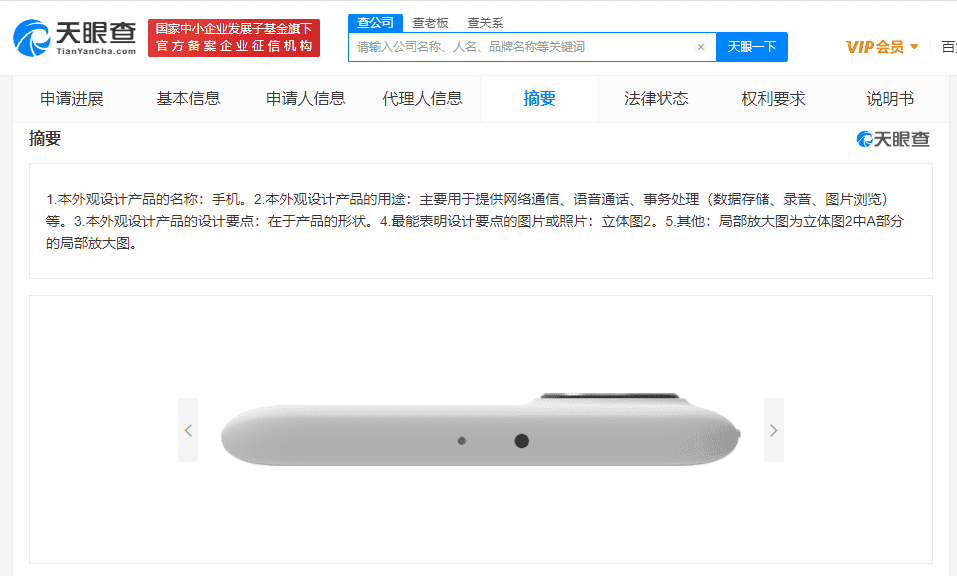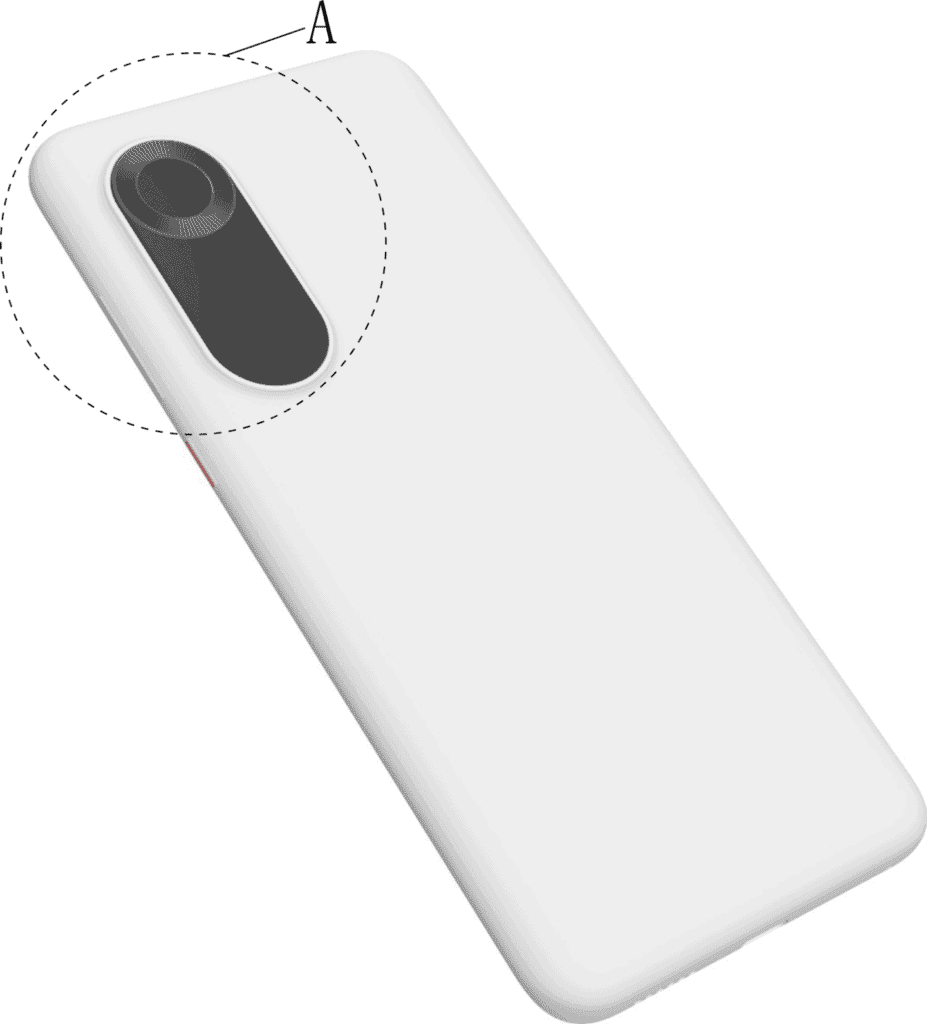You are using an out of date browser. It may not display this or other websites correctly.
You should upgrade or use an alternative browser.
You should upgrade or use an alternative browser.
News on China's scientific and technological development.
- Thread starter Quickie
- Start date
Huawei patents a “holeless” smartphone display
Chinese manufacturing giant, Huawei, has been quite consistent in the industry. However, since the on the company by the U.S., its development in the smartphone industry has slowed down. However, the company still has some technological advancements that it is bringing to the industry. A recent Huawei reveals the company’s solution for a smartphone display without holes. The patent of Huawei Technologies Co., Ltd. shows that it is a screen for a “holeless” smartphone display.

The abstract shows that the design product is mainly used to provide network communication, voice calls, transaction processing, etc., and its design point lies in the shape of the product. It is worth mentioning that, judging from the patent pictures, there is no opening on the screen of the mobile phone. There is also no pop-up camera on the top of the smartphone. As of now, we can not be so certain whether or not this device uses an on-screen camera.

In addition, the patent image also shows that the rear camera module is oval, and the bulge is not large. Huawei released its first true full-screen mobile phone in 2019, the Huawei Enjoy 10 Plus. However, this smartphone uses a pop-up camera to achieve a true full-screen display. The mobile phone in the patent is likely to use an on-screen camera technology.

Huawei’s “Interactive Liveness Detection” Public Beta 1.0 Released
Interactive Liveness Detection” has now released version 1.0 public beta. The event time is from March 4 to March 31, and it is only 8.9MB in size.The application introduction shows that Huawei ML Kit interactive live detection adopts the method of command and action coordination. The six available actions include blinking, opening your mouth, shaking left, shaking right, staring, as well as nodding. Users need to cooperate to complete the action detection. It performs face liveness detection and has a good defense effect on photos, videos, and mask attacks. At the same time, for scenes with poor light, accurate prompts are provided to create a safe and reliable payment-level liveness detection capability.
The highlights of version 1.0 include the accuracy of detection results, the reliability of attack prevention, the speed of detection, and detailed scene prompts. This beta aims to enhance the robustness and accuracy of liveness detection.
From the perspective of the privacy statement, the interactive live detection service requires file read and write camera usage and screen recording permissions. However, Huawei claims that the personal information of users who use this service will not be uploaded to Huawei servers.
AssassinsMace
Lieutenant General
Will robots have legs or wheels first?
Wheels will be less draining on the battery. If you made an military combat robot it would also be less noisy and move quicker.
Wheels will be less draining on the battery. If you made an military combat robot it would also be less noisy and move quicker.
China has detected global gravity field data for the first time by using its own satellite, becoming the third country to independently detect the global gravity field in the world after the US and Germany.
The gravity field data was acquired recently by Tianqin-1, China's first satellite for space-based gravitational wave detection, which was launched on December 20, 2019, said Luo Jun, chief scientist of China's Tianqin gravitational wave detection program. He is also a deputy to the National People's Congress at the ongoing two sessions, according to a report of CCTV.
The data is of great strategic significance to the national economy and people's livelihood, according to scientists.
It will serve geodesy, geophysics, oil and gas resource exploration, national defense and security, and help cope with global climate change, disaster prevention and reduction and other common challenges faced by mankind, researchers said.
On August 7, 2020, Tianqin-1 carried out an application test of the gravity field for about 30 hours. During this period, the Global Navigation Satellite System receiver and inertial sensor, the key payload of Tianqin-1, were switched on at the same time, and the satellite's flight track basically covered the whole world.
With the acquired data, the Tianqin program team wrote a global gravity field data science report and completed the on-orbit test summary assessment, said Luo, who is also an academician at the Chinese Academy of Sciences (CAS).
However, the accuracy of Tianqin-1's gravity field measurement was not high, Luo pointed out.
He said the result is more significant in a way that it has laid a technical foundation for China's subsequent gravity satellite program.
Though Tianqin-1 is not a specific gravity satellite as its purpose is to verify key technologies for space gravitational wave detection, it still has made breakthroughs in many frontier fields, including the Earth's gravity field detection, because the Tianqin program itself requires scientific and technological breakthroughs in many fields so that it can be completed, said Luo.
Not only has the Tianqin-1 completed its own technical verification tasks and exceeded expectations, but has also made China independently measure the global gravity field for the first time, which, at the same, enabled it to become China's first satellite to achieve such results, said Sun Heping, another CAS academician.
Luo revealed that the Tianqin-2 satellite program is also progressing smoothly.
Two satellites will be sent into orbit during the Tianqin-2 mission to test the gravity field, Li Miao, director of the physics department at Southern University of Science and Technology in Shenzhen, Guangdong Province, told the Global Times on Wednesday.
Li noted that to measure the high-order gravity field, two satellites are needed as one satellite can only do the low-order gravity field with low precision.
Li added that in the Tianqin-3 mission, three satellites will be sent to space for gravitational waves detection.
, Tianqin-1 completed an in-flight verification for satellite drag-free control technology, which blocked external forces that affect a satellite, excluding gravity, so it can remain static and stable.
Initiated by Sun Yat-sen University in South China's Guangdong in 2015, the program will eventually consist of three satellites that will form an equilateral triangle around Earth, the Xinhua News Agency reported.
Fake news, China copies, they are meant for research to make better plastic toys. Trust me
CHANGSHA -- Chinese manufacturer CRRC Zhuzhou Locomotive Co Ltd said Thursday that tests have been completed for its next generation of commercial maglev train.
The train, with a designed speed of 200 km per hour, has achieved multiple tech breakthroughs such as unmanned driving and non-contact power supply, said Zhang Wenyue, deputy head of CRRC Zhuzhou Locomotive's maglev research institute.
It is expected to be applied to intercity and urban lines of 50 km to 200 km, he added.
Equipped with autonomous driving and 5G millimeter-wave communication, the train is operated by a ground control system. Real-time data are gathered for troubleshooting to ensure its safety.
Compared with the previous generations of commercial maglev trains, the new model shows significantly improved traction efficiency, hill-climbing ability, and acceleration performance, according to the company.
Beijing to Shanghai in 2 hours???
CHANGSHA -- Chinese manufacturer CRRC Zhuzhou Locomotive Co Ltd said Thursday that tests have been completed for its next generation of commercial maglev train.
The train, with a designed speed of 200 km per hour, has achieved multiple tech breakthroughs such as unmanned driving and non-contact power supply, said Zhang Wenyue, deputy head of CRRC Zhuzhou Locomotive's maglev research institute.
It is expected to be applied to intercity and urban lines of 50 km to 200 km, he added.
Equipped with autonomous driving and 5G millimeter-wave communication, the train is operated by a ground control system. Real-time data are gathered for troubleshooting to ensure its safety.
Compared with the previous generations of commercial maglev trains, the new model shows significantly improved traction efficiency, hill-climbing ability, and acceleration performance, according to the company.
I think there is more than 800 km from Beijing to Shanghai. so is more like 4 hrsBeijing to Shanghai in 2 hours???

